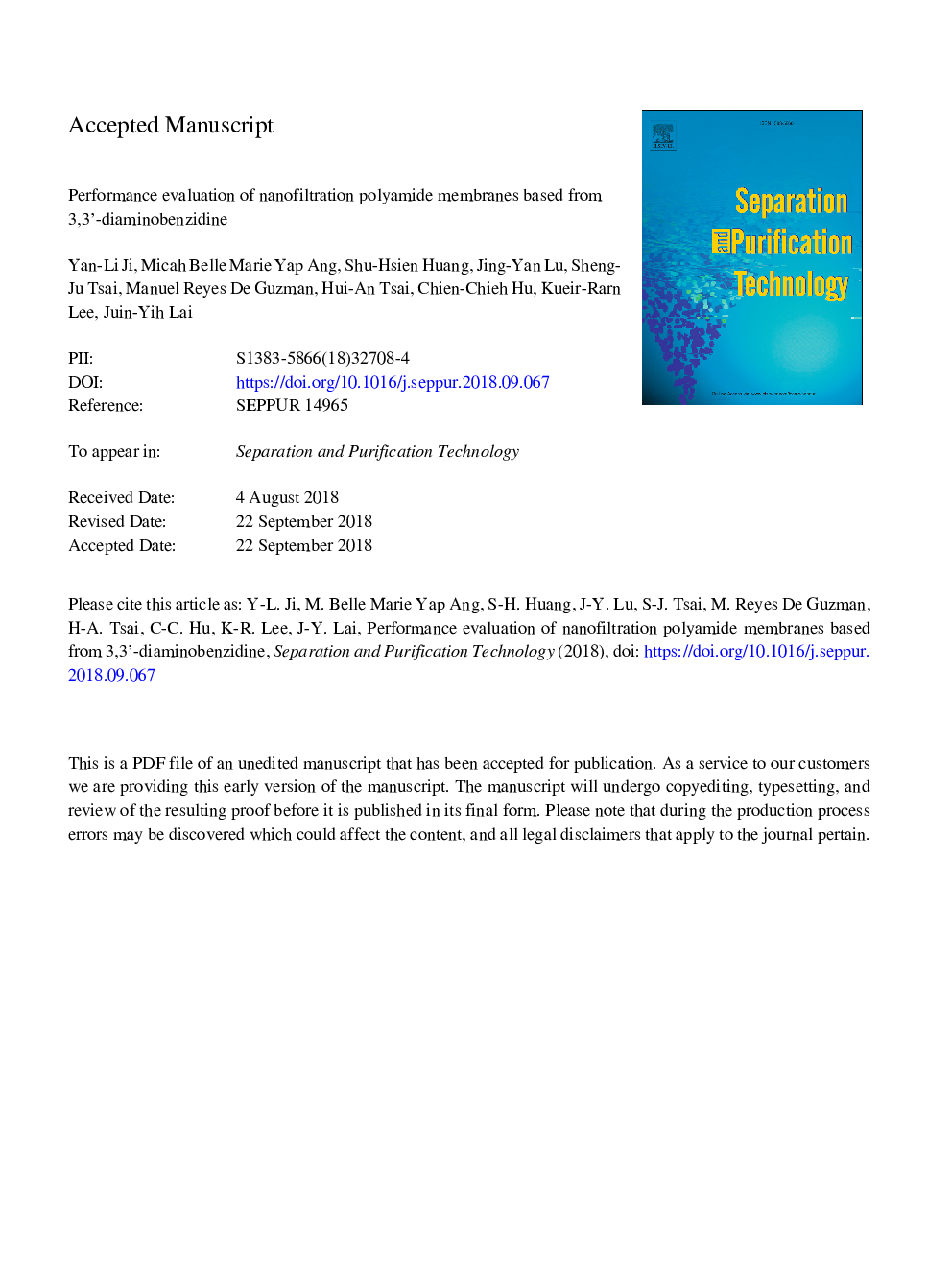| Article ID | Journal | Published Year | Pages | File Type |
|---|---|---|---|---|
| 11023720 | Separation and Purification Technology | 2019 | 33 Pages |
Abstract
Our present study used 3,3â²-diaminobenzidine (DAB) to prepare nanofiltration polyamide membranes. A polyamide layer was formed on a polysulfone (PSf) support through interfacial polymerization; DAB was reacted with different polyacyl chlorides: isophthaloyl chloride, succinyl chloride, and trimesoyl chloride (TMC). Attenuated total reflectance-Fourier transform infrared confirmed the polyamide layer formation. Scanning electron microscopy illustrated that only the reaction between DAB and TMC yielded a defect-free polyamide layer. The membrane preparation conditions comprised the following parameters: DAB and TMC concentrations, immersion time (PSf support in DAB solution), and polymerization reaction time. The optimized membrane delivered an average permeability of 12.5â¯Lâ¯mâ2â¯hâ1â¯MPaâ1. Its salt rejection followed this order: Na2SO4 (84.2%)â¯>â¯MgSO4 (48.8%)â¯>â¯MgCl2 (14.5%) or NaCl (15.3%). Moreover, the membrane was stable at feed pH of 5-10, at operating temperatures of 25-70â¯Â°C, and within a long-term nanofiltration period of 148â¯h.
Keywords
Related Topics
Physical Sciences and Engineering
Chemical Engineering
Filtration and Separation
Authors
Yan-Li Ji, Micah Belle Marie Yap Ang, Shu-Hsien Huang, Jing-Yan Lu, Sheng-Ju Tsai, Manuel Reyes De Guzman, Hui-An Tsai, Chien-Chieh Hu, Kueir-Rarn Lee, Juin-Yih Lai,
